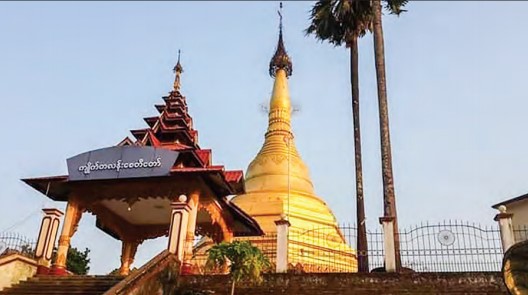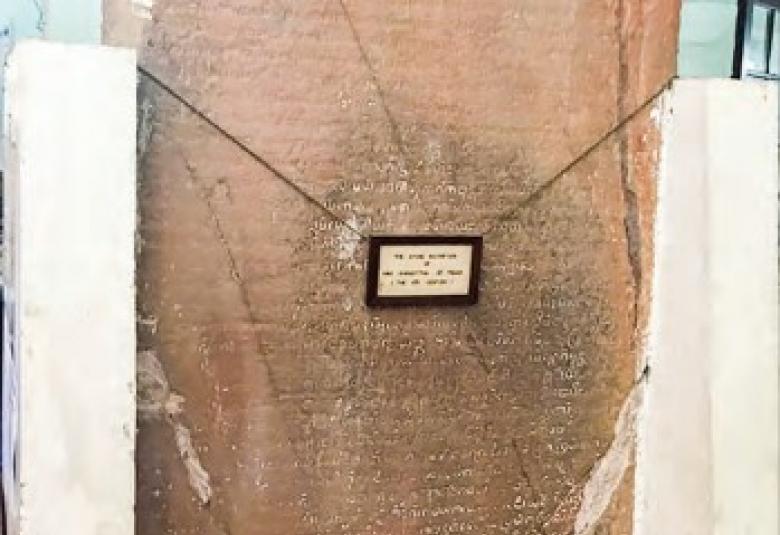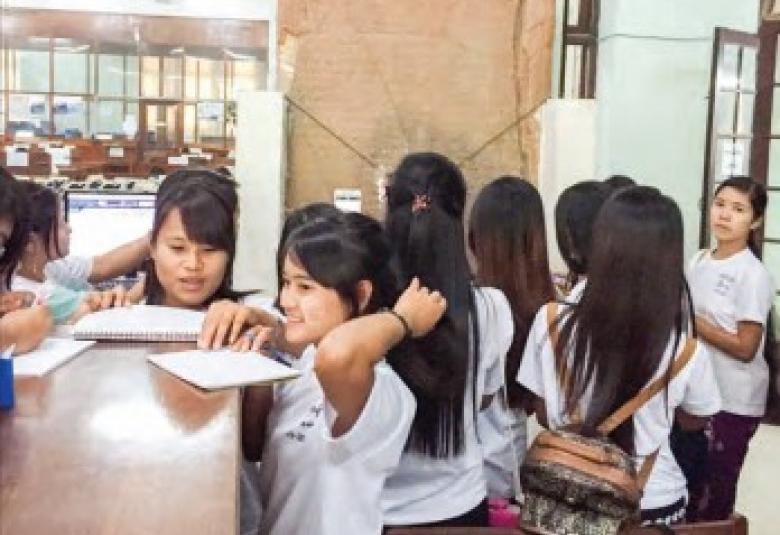Dr Aung Myint Oo
AS a visitor enters the campus of University of Yangon, and walks along the Chancellor Road, before he (or she) reaches the Convocation Hall, close to the Thit-pok, the massive Tetramelaceae hardwood tree, the University of Yangon Library is there on the right side of the road, a wellknown treasure house of knowledge and learning. Many a time have many a scholar, engaged in academic pursuits related in some way or other with University of Yangon, visited this precious resource centre; however, not many have discovered the rare existence of the genuine ancient heritage of King Kyansittha of Bagan Period, housed in this modern building. This might lead the reader to ponder over the relationship between University of Yangon and King Kyansittha. It was a short while after University of Rangoon (University of Yangon) was established that this ancient heritage was brought to University of Rangoon Library for the sake of the preservation of Myanmar culture. This historic heritage, which dates back to the 11th century, marking the reign of King Kyansittha, now remains through the life span of nearly one thousand years. It now stands in University of Yangon Library as an invaluable part of the history of University of Yangon.
What is that ancient her itage of King Kyansittha preserved in University of Yangon Library? How did it find way into this house of knowledge? What historical values and essence have been immortalized in it? As a visitor entering the Library, he may be attracted by a huge stone inscription, erected on a cement base, next to the Loan Section on the right side of the entrance. It is over seven feet high and over three feet in breadth. There it stands tall and heavy but many might have failed to notice its existence.
If the visitor takes a close look at the inscription, first he will see a small label reading, "THE STONE INSCRIPTION OF KING KYANSITTHA OF PAGAN (THE 11th CENTURY)". Though this ancient column dates back to nearly one thousand years ago, it has remained intact, housed inside the Library, free from winds and weather through time and changes. Thanks to the Library, many characters have remained free from damage. Though resembling the ancient Myanmar characters, it is rather hard to decipher what the inscription reads. Because the history of this stone inscription has remained unknown, and the meaning of the lines unfathomed, many visitors to the Library have failed to turn to their curious eye to this stone inscription.
A close study will reveal that this stone inscription has remained a genuine artefact of ancient heritage. Moreover, it would be of scholarly interest to make a trace of its arrival to this Library. Before the label was hung on it, reading it had been the work of King Kyansittha, this stone inscription had remained a brains-racking riddle for some time. During the colonial period, before University of Rangoon (University of Yangon) was established, it was displayed at Phayre Museum, Yangon, which was attached to the Zoological Gardens, which was located in the present site of Yangon General Hospital. Since the British colonists were avid collectors of artefacts of ancient heritage, as soon as they had occupied the whole country, they began the collection of the ancient artefacts of Myanmar culture from all over the country, and had them on display in Phayre Museum. The ancient stone inscription of King Kyansittha was brought from one part of the country and had for some time been on display in the Museum.
However, though the inscription gave an impression of ancient writing, nobody was able to decipher its meaning until the ancient Pyu and Mon expert Dr C.O. Blagden of the School of Oriental Studies, London University took the task of deciphering. He was a great scholar who taught ancient Phyu and Mon language to Sayagyi U Pe Maung Tin, who had come to England on scholarship programme and who would later be the first Myanmar principal of University College, University of Rangoon. Dr Blagden, who had never been to Burma (Myanmar), perusing the ink impressions of the inscription, identified the text as one written in ancient Mon, and gave his deciphering of its content, which appeared in print with the photographs of the ink impressions in Volume (1), Part (2) of Epigraphia Burmanica, published in 1920.
Dr Blagden was successful in deciphering the sources of the characters of the epigraph and its content, but the original location of the pillar remained unresolved: to use his own terms, " The original location of this record is unknown to me." But with reference to Line 47 reading "Ceti kyauk-talin", the possible original location could be that of a pagoda in the region of the Mons in Lower Myanmar, but no exact location was identified. In 1930s, the Zoological Gardens, formerly situated at the present site of Yangon General Hospital, was moved to the present site of Yangon Zoological Gardens, and the Phayre Museum, attached to the Zoological Gardens, was disbanded. The inscription pillar was temporarily kept at the Secretariat Yangon. In 1933, the authorities of the University of Rangoon moved the pillar to University of Rangoon Library, the transportation charges being paid by the University. However, since its original location had remained unresolved, it carried the label: Place of Origin Unknown.
(To be continued)




